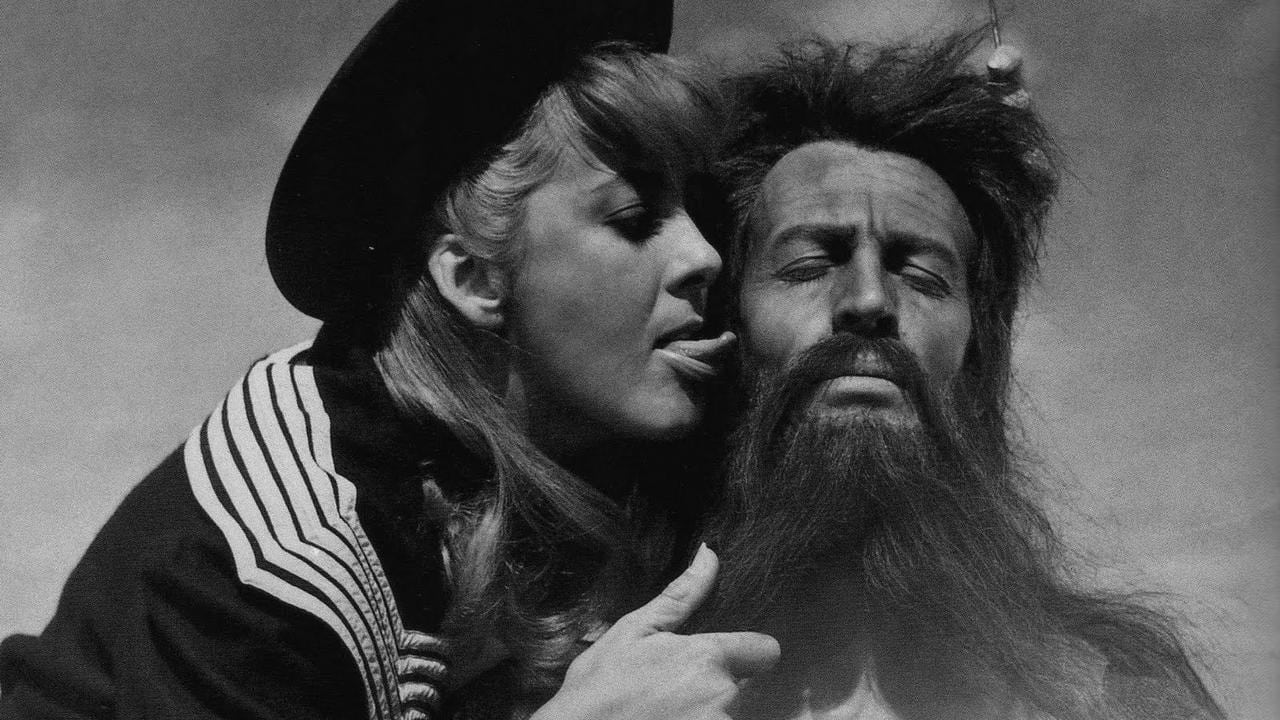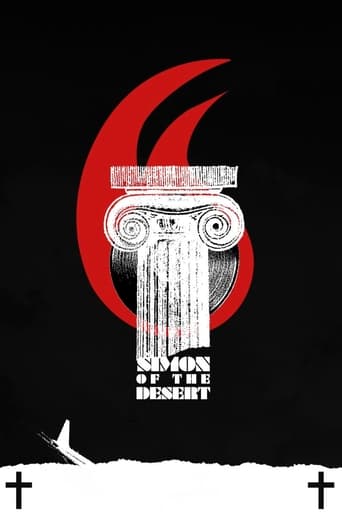

Simón del desiert is a Mexican 1965 film directed by Luis Buñuel. It is loosely based on the story of the ascetic 5th-century Syrian saint Simeon Stylites, who lived for 39 years on top of a column. It stars Claudio Brook as Simon. He lives as hermit on top of a column for self-inflicted sacrifice. He does this an attempt to get closer to God for this reason he has numerous peasant followers and clergymen support him in his sacrifice. They believe he is a saint and can perform miracles. The film chronicles him being tempted by the devil as he continues to live atop of the column, the actions of the supposed holy clergymen and his followers. Interesting enough Satan is portrayed by the lovely actress Silvia Pinal who tries various ways of making Simon lose his focus on God.
... View MoreI have one word to describe this film, WHAT? The film was a really unusual hypocritical view on the Christianity religion. The man was placed a on a tower that was literally placed in the desert that towered over everything. Simon wanted to be excluded from the world and wanted to be closer to God. He performed miracles, but the one showed in the film was a man that had both his hands were cut off for stealing. God gave him back his hands to provide for his family and the first thing he does is slap his cheeky son in the face. The film mocks Christian values with comedic banter. The most entertaining scenes were the ones with the sheep farmer. He mocked the young monk and insulted Simon on his tower. He was deformed and probably needed a miracle from God and yet he was content with his life and never asked Simon to ask God to help him. The scenes with the devil are shocking. On moment the devil is playing and the next moment she is exposing her breast. She is definitely creepy and convincing as sadistic creature. The ending was the probably the most confusing part of the film and I still don't fully understand the exact meaning of the ending. The film left the audience with a feeling of disappointment, confusion, and several questions. The devil's last attempt to persuade Simon from his righteous path transported them to the 1960s. One moment they are standing on the pillar and a commercial airline flies overhead and they are in a club. The devil dances while Simon drinks alone in a corner. The main question was "Did he turn his back on God?" or did he remain loyal. The unusual confusing ending ruined the entire film experience.
... View MoreMake no mistakes, this film directly satirizes and criticizes the Catholic church that Bunuel found himself at odds with. While quite worth viewing, the film is not appropriate for children, nor is it a typical narrative adventure. The film can be quite funny at times, pointing out facets of the church and religion which can be perhaps contradictory. While it seems ridiculous, it so happens that people actually did get on top of pillars and prophesize/sermonize, the irony being that the people were being looked down upon by the pillar prophets. Not all viewers will appreciate the cutting humor or satire of the film. In the film the devil is represented by a woman. The woman who is Satan is often tempting Simon, topless, or is all of a sudden an old and undesirable hag of a woman, without missing a beat. The devil taunts Simon in humorous ways, at one point punting a lamb. While it felt that the film moved a smidge on the slow side, it is cut short as the director ran out of funds for the production. The ending is abrupt, but still resolves the plot, which is untraditional, yet intelligent and sophisticated. The film is not for the average audience, but is a favorite among film scholars and cinephiles. Younger film scholars should perhaps view the film multiple times to get the full effect of the film, as it requires full attention to catch the subtleties included in the plot. The film's title may present itself like a sword and sandal film, but is in fact completely unconventional in its execution. There are plenty of sandals in the film, few swords to be found except those used to form metaphors and satires of idiosyncrasies. For example, Simon, who is considered to be most holy, refrains from interaction with the public, and is withdrawn from people and overall temptation. However, it is quite ironic that he still retreats to the devil in the end, where he is transported to a club where people are dancing. While Simon is among people who are dancing in a trance like matter, devil present, Simon still continues to opt out of participation or interaction, yet he has technically given in to temptation anyways.
... View MoreSimón del desierto aka Simon of the Desert was a story about a pillar priest who stands on a pillar worshiping God and performing miracles while doing battle with the devil. The movie starts with him being transferred to a new pillar that is far grander than his previous one. After the switch, he performs a miracle giving a thief back his hands so that the thief can feed his children. Over the course of the movie, Simon is tempted by the devil in his various forms to come down from his pillar and join in on the temptations that the earth has to offer. Throughout the movie, Simon resists the devil at every turn. The end of the movie is interesting and slightly confusing. The scenes jump from Simon standing on the pillar in the middle of the desert to him in a Chicago nightclub talking to a beautiful woman. It is presumed that this woman is the devil and that Simon's resistance to temptation is wearing thin. This movie is yet another on that its meaning is lost on me. I get that Simon is fighting the devil and winning but with the ending just takes a left turn. Was Simon in the night club the whole time thinking back or was that just the way the devil. All in all this movie is good until you get to the end and it just throws you for a loop. I enjoyed the play between Simon and the devil and the little midget over the course of the movie. I would say that if I were Simon I would rather be in the night club with the hot blond than having to back out in the sun watching the goat herder and fighting the devil. What can I say pick your fights and know where you stand weather it on a pillar or in the night club.
... View More